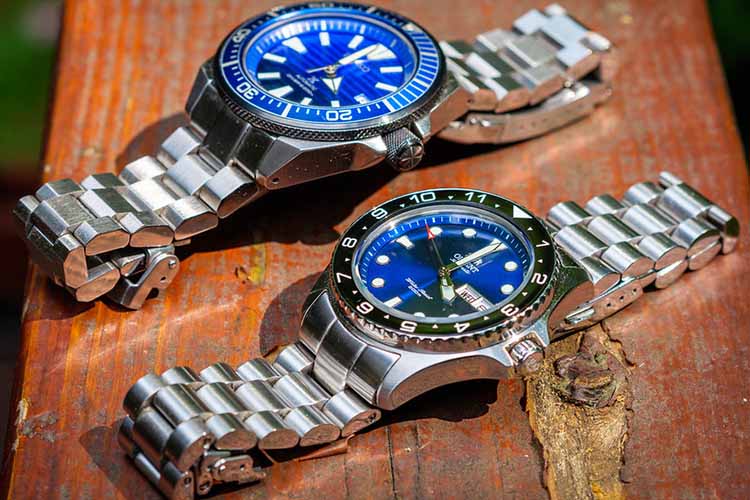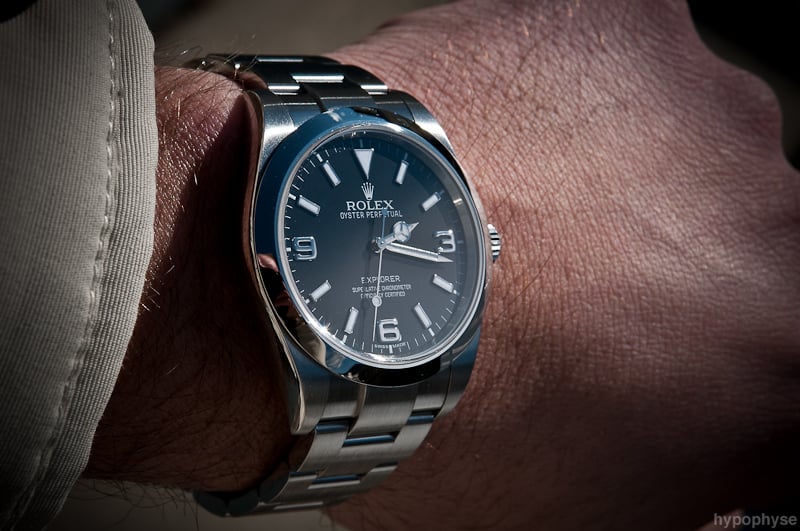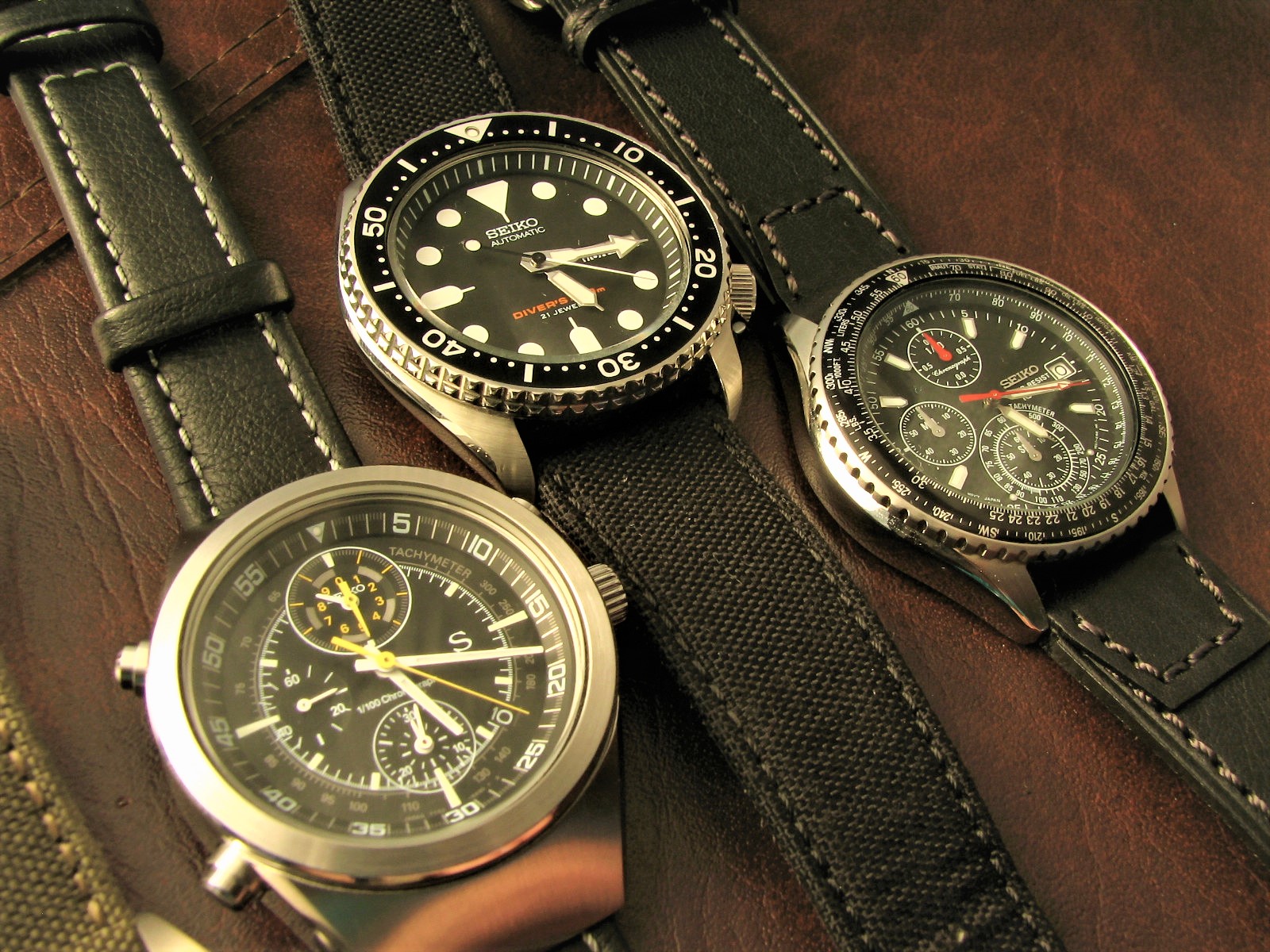Why Are Dive Watches So Popular?
You have probably seen a lot of dive watches without even thinking about it, they have become part of watch culture and have slowly evolved away from their primary purpose.
Dive watches are likely the most popular style of sports watch on the market after coming a long way from their original utilitarian roots. The majority of wearers are not even using dive watches for diving, or even sports at all but rather for their durability, style and versatility.
Popular culture has also helped raise the popularity of dive watches, with everyone from Bond to Stallone wearing classic dive watches like the Rolex Submariner.
Today we are going to be looking at dive watches, their background, and if people actually use dive watches for diving, or if they are just a watch style.
In the modern watch industry, it is rare that you do not see the words ‘water resistant’ on a timepiece, this was not always a common addition to watches and the major boom happened in the 1920s.
Water-resistance is often mistaken for waterproof. That is not the case, no watch is truly waterproof as that implies there is zero chance of water ever entering the watch.
Table of Contents
Dive Watches Background
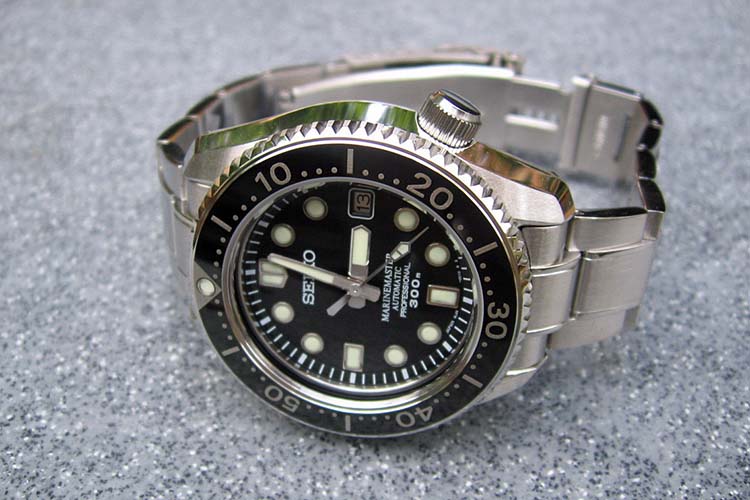
To understand the impact that dive watches have had on the watch industry and how they shaped the designs, styles and manufacture of a lot of different watch niches, it is important to look at the history of diving watches.
We will be briefly covering the major points that have happened since their inception, obviously, we will be focusing on the most impactful changes and updates, there are countless more in the rich history of diving watches.
History of Dive Watches
As we mentioned above, it was the mid-1920s before the first version of a water-resistant watch appeared on the market made by none other than the famous Rolex.
The inception of water-resistant watches came with the creation of the Rolex Oyster that was designed to protect the interior against water.
In 1927, a British woman named Mercedes Gleitze attempted to swim across the English Channel while wearing the Rolex Oyster, and although her attempt failed due to unstable weather, the watch held up and proved that it was fit for purpose.
The next development that would change the watch industry indefinitely was again by the market juggernaut Rolex who launched the first automatic movement watch named Perpetual.
Due to the automatic design, the watch would prove to be more water-resistant in the long term and marked a huge leap forward for the dive watch industry.
It took a few years for Rolex’s competitors to catch up, and in the early 1930s, Omega launched their first official diving watch, which was appropriately named Omega Marine. Under tests, the Omega Marine reached depths of 135m (443 ft) or water pressure of 1.37 MPa, which was incredibly impressive prior to World War Two.
It took until the late 1940s for Omega to come up with one of its most iconic timepieces that is still recognized as one of the industry staples in diving and sports watches. Enter the Omega Seamaster, the durable, stylish and reliable watch not just for diving.
The Omega Seamaster is one of the most recognized and popular models that Omega or any watchmaker has released. Simple, elegant, and timeless the Seamaster has stayed mostly the same since its inception.
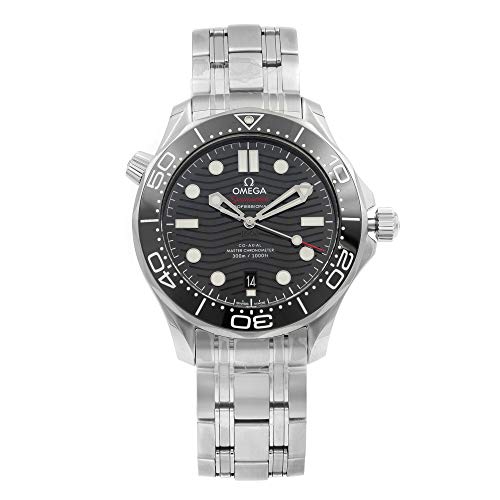
The continuous innovations of diving watches and the need to go further, deeper and for longer kept pushing the durability of the timepieces.
In the 1980s, Rolex created the trip-lock crown which allowed the high-quality materials to be paired for a case that was as secure as a submarine hatch, this was called the ‘Sea-Dweller’ for obvious reasons.
Dive Watches in the Modern Era
In a contemporary world, dive watches are probably the most prominent and popular sports watch on the market, so they have come a long way from why they were created to how they are used now.
Dive watches for the majority of people are not used for diving, or even sports at all, they are just worn because of their durability, style and versatility.
A large percentage of people who own a dive watch probably do not even consider getting it wet at all, let alone wearing it for water-based activities. This showcases how far dive watches have come and their inclusion in everyday watch culture is firmly cemented.
What Defines a Dive Watch?
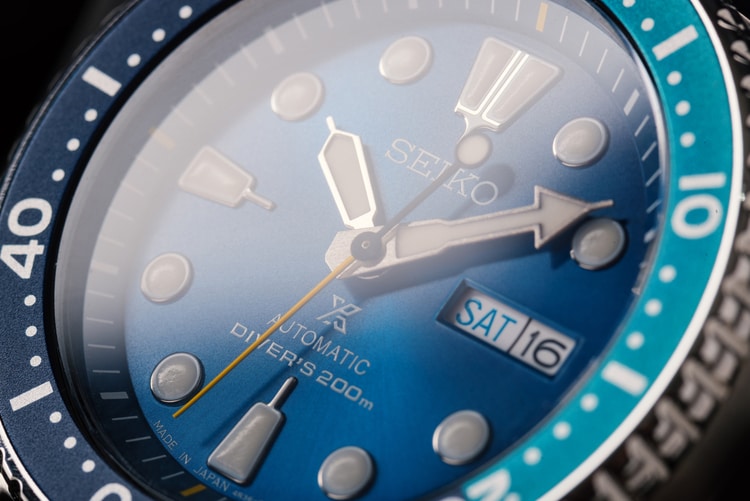
Depending on who you speak to, they will define a dive watch in different ways but there are definitely some key features that make a watch a dive watch. Let’s look at some common features you’ll find on the best dive watches.
Rotating Bezel – seen on the majority of dive watches, originally used to help the diver know how long they had been submerged and thus help gauge underwater time. Read more about why watches have rotating bezels.
Luminous Hands – a lot of dive watches will have some form of easy-to-read dials in different conditions so will typically have some form of luminous hands or dials.
Rubber or Durable Strap – although rubber is not always the case, the straps used in dive watches will be a lot more durable than a traditional timepiece.
Water Resistance – needless to say, there needs to be a level of water resistance in any dive watch, regardless of whether the wearer plans to dive in it or not.
Screw-Down Crown – one of the most important factors is the water-tight crown that allows the interior of the watch to remain dry and operate properly.
Extra-Thick Crystal – you will find this on dive watches that have a higher pressure resistance, it is not as widely advertised but used in a few popular models.
Rubber Seals – additional water-resistant measures are fairly common in dive watches, so they may have rubber seals to keep water getting into the joins.
There is obviously a big difference between a watch that is used for diving and what the industry defines as a dive watch. As we have discussed, diving watches have evolved to be much more than their intended purpose and become a large part of modern watch culture.
Does Anyone Actually Dive with a Luxury watch (Rolex)?
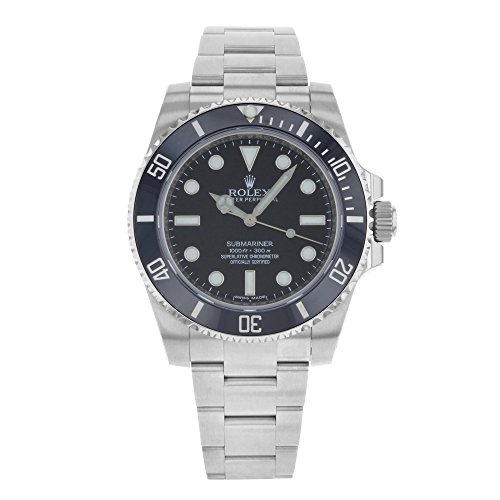
As we alluded to in the previous section, there was a time when these luxury diving watches were used for exactly that and by very notable public figures.
In the early 50s, Auguste Piccard dove to 3150 meters while submerged in a dive capsule with a Rolex attached to the outside of the unit.
In a similar vein, famous diver Jacques Piccard attempted and succeeded in the deepest dive depth (≈11,000 meters) in 1960 with a Rolex Deep Sea watch attached to the outside of his dive capsule.
Recently, there have been a lot fewer stunts like this, and the novelty of having a luxury watch that can be submerged underwater has worn off.
It is a lot rarer to find someone who dives with a luxury watch such as a Rolex in the modern era.
With this being said, you will still find a lot of water-based professionals, sportspeople and boat owners wearing luxury dive watches, but this is more for a symbol of status or fashion, and not so much the dive qualities.
Do Scuba Divers Actually Use Dive Watches?

The short answer is yes, divers still use dive watches. The major difference is that the majority of contemporary divers will probably lean to digital timepieces or even smartwatches. Some may even use a diving computer or smart tech.
Dive watches were originally designed to be used as intended, but since their inception, they have become a staple in the sports watch industry.
As time has gone on, they have been used less and less, and with the constant evolution of technology, it is rarer to see someone with a traditional dive watch when underwater.
Nowadays you are much more likely to see someone in a suit or on the street in a dive watch and much less likely to see a scuba diver in a dive watch. Dive watches have become a huge market within both luxury and regular watch brands.
As consumers we want more durable, more stylish and more versatile watches, thus, it is rare to find popular watches that do not have some form of water resistance or durable build.
Dive Watches Popularity
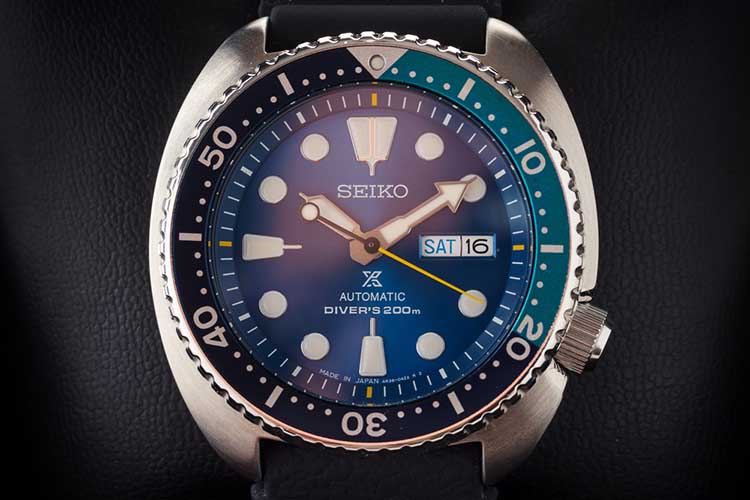
From their humble and practical beginnings dive watches have become much more than the sum of their parts, and a popular and timeless trend within the watch industry.
They remain highly popular and recognizable even to this day. Bestselling affordable watch models from brands like Orient (Mako and Ray) or Seiko (Turtle and Samurai) have continued to propel the sales of dive watches, even among aficionados who never plan to dive – or even get them wet.
As we alluded to, the majority of watches both luxury and not will have some level of water resistance and it is seen as the industry standard and not a luxury feature anymore.
While there is a rare exclusive tier of dive watches with 1000M resistance, the most affordable dive watches will have a rating of around 200m or better.
Needless to say, dive watches have become incredibly popular in all walks of life and have diversified away from their original purpose while still keeping the elements that make them a diving watch.
Check out these top dive watches under $500.

